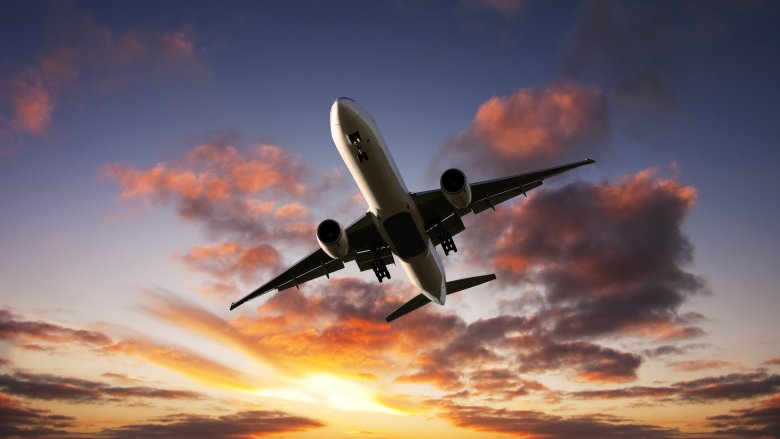The Mysterious Flight MH370 Disappearance May Have Been Solved
People sometimes vanish. Dogs, too, occasionally, and sometimes socks. But entire Boeing 777s don't vanish. A Boeing 777 weighs 775,000 pounds and costs $320 million. It's not the sort of thing you just lose track of.
Except that's exactly what happened to Malaysian Airlines Flight MH370 in March 2014 — it was there, and then it was gone. Like the disappearance of Amelia Earhart, MH370 became one of the greatest aviation mysteries of all time, and it inspired just as many conspiracy theories because that's what always happens with great mysteries.
But the disappearance of MH370 and its 239 passengers could no longer be a mystery. According to CBS, in May 2018 some investigators ("an international group of aviation experts") said they are pretty much in agreement about what happened to the doomed airliner, and it's got nothing to do with aliens, jihadists, or smoke monsters on remote islands. In fact its disappearance was likely painfully and horribly simple to explain: basic human awfulness.
An independent investigation by 60 Minutes Australia concluded that the missing airline was flown into the ocean by its pilot. Those involved in the investigation weren't just reporters trying to sell a story, either, they were field experts who said the evidence points to a deliberate act rather than an accident. "He was killing himself," said Larry Vance, a Canadian Air crash investigator. "Unfortunately, he was killing everybody else on board, and he did it deliberately."
Investigators do know the plane's communications systems were turned off. They were also able to recreate the aircraft's flight path using radar records, and from there concluded that, after an extreme reversal of course that basically amounted to a U-turn, the pilot flew along the border between Malaysia and Thailand, crossing in and out of each nation's airspace in an effort to avoid detection. At one point, he dipped the plane's wing over Penang, his hometown, as if to bid farewell. He then continued over the Indian Ocean, flying for another six hours.
After that, investigators were split about what happened — one theory holds that the plane ran out of fuel and slipped into a "death dive," hitting the surface of the water at high speed. The second theory says the pilot landed the plane on the surface of the water. The physical evidence recovered so far — including one of the plane's wing components — seems to support the second theory, since its condition is consistent with an aircraft in a controlled descent, rather than one that was falling out of the sky.
Investigators also believe that the pilot may have depressurized the aircraft, so his passengers would be very helpfully unconscious when the end came. That seems like a logical explanation for the absence of last-minute phone calls and text messages from passengers to loved ones.
But hey, don't get too excited about the mystery being solved. There are still plenty of people who aren't buying it — the pilot's family, for a start, who say that nothing can be known for certain until the plane has been recovered, and most of it is still in an unknown location at the bottom of the Indian Ocean. And a 1,500-page report by Malaysian officials released in July 2018 says the investigation is still inconclusive, though it didn't rule out "unlawful interference by third party."
What the 60 Minutes Australia investigation failed to determine was motive — if the plane's captain deliberately flew the plane into the ocean, then why? According to the Guardian, the Malaysian investigation determined that "the pilot and first officer were well-rested and not under apparent financial, emotional or psychological stress," which makes it difficult to complete the picture. But the 60 Minutes Australia report did note one sinister piece of evidence found in the pilot's home: A computer simulation of a flight path that ended in the Indian Ocean.
That really just leaves the details under dispute, and without the plane itself, those details may never be known. Still, some investigators don't think the plane is necessary to solve the mystery. "The basic conclusions about what happened here are already available on the evidence," said Martin Dolan, former Australian Transport Safety Bureau chief. "This was planned, this was deliberate, and it was done over an extended period of time."

